
|
|
|||||
There's nothing quite like the solitude and feeling of being in the desert. It's one of the few places where you can actually find true peace and quiet. Strange, barren and often inhospitable landscapes stretch out for as far as the eye can see, and in most desert environments, there is little in the way of foliage that attracts the eye. Visually it's generally all a muted mixture of small cacti and shrubbery that have adapted to a harsh terrain. However, in one southern California desert, a certain tree (which isn't actually a tree at all) has commanded attention to the point that it has a National Park named for it—Joshua Tree National Park.
Joshua Tree National Park is different than most U.S. parks, not just because of the Dr. Seuss looking trees that dot its "Land of the Lost" landscape, but because it has nothing traditionally iconic, like a specific mountain, lake, or waterfall, to draw in visitors. Instead, it is filled with odd-looking tree-like plants, and many, many heaps of smooth granite boulders, which are named for the rock climbing routes found within them rather than what they actually resemble, as other parks usually do. This type of landscape is stark, with a subtle beauty that takes time and a conditioned eye to appreciate....and to photograph properly. This is where we come in.
A group of 12 eager photographers met in the city of Twentynine Palms, just outside the park, on a warm summer's evening to meet instructors and professional photographers Brian Rueb and Jean Day. We were all excited to begin a weekend of days and nights filled with photography education and fun in Joshua Tree NP.
 The class began with an orientation to go over equipment, safety, stewardship for the land, and what to expect during the weekend together. The orientation also gives the class a chance to get to know one another and the instructors before setting out the following morning to start shooting...and we do start EARLY in the morning.
The class began with an orientation to go over equipment, safety, stewardship for the land, and what to expect during the weekend together. The orientation also gives the class a chance to get to know one another and the instructors before setting out the following morning to start shooting...and we do start EARLY in the morning.
We began our workshop the following morning, at 4:30am. Our sleepy-eyed class met outside the hotel and loaded up into our custom photography vehicle, affectionately known as the ApCab. Once loaded up, we were off to the park for a morning shoot. We had noticed that during the evening before, some wispy clouds had blown in, situating themselves near our first stop, a little oasis known as Hidden Valley.
This area is full of interesting rock shapes and of course, the twisty, multi-armed, palm-topped Joshua trees...which are actually a part of the Yucca family, and not a tree at all.
 Once on site, the class broke up and Jean and Brian helped them to find good compositions that accentuated the beauty of the desert, while taking in some of the best of the morning clouds. Instructors took this time to explain filters, such as the use of polarizing filters, and the importance and helpfulness of a graduated filter when exposing scenes with bright skies and darker foregrounds (like we experienced with our first sunrise).
Once on site, the class broke up and Jean and Brian helped them to find good compositions that accentuated the beauty of the desert, while taking in some of the best of the morning clouds. Instructors took this time to explain filters, such as the use of polarizing filters, and the importance and helpfulness of a graduated filter when exposing scenes with bright skies and darker foregrounds (like we experienced with our first sunrise).
The class found their preferred spots, and used a variety of good compositional elements to make strong images. Whether it was a cactus for a foreground, cracks in a granite boulder for a leading line, or a simple composition of a rock and the sky, everyone was set up to get great shots of what turned out to be a truly vibrant and long lasting sunrise.
We spent a solid morning in Hidden Valley and the surrounding area, making a variety of very nice images using as many of the unique subjects as we could. The rising sun bathed the granite in warm, golden light, which made for some very nice images juxtaposed with the crazy Joshua trees.
Time flew, and with everyone out scouting and shooting their own unique images, before we knew it, it was almost 9am and time to head back for the morning breakfast....we had been out for over 4 hours!
The desert gets hot in the summer, so to avoid the misery of the mid-day sun, we spent a couple hours each afternoon of the workshop helping students with image review and post-processing tips on their laptops. Those without laptops were free to watch the demonstrations by instructors, and still get feedback on their shots from Brian and Jean. In just what we saw that morning, there was some truly great morning images!
 When the review was over and some of the mid-day heat had subsided, we headed back into the park for sunset shooting, and a bit of star photography.
When the review was over and some of the mid-day heat had subsided, we headed back into the park for sunset shooting, and a bit of star photography.
We made a brief stop in a section of the park with a large number of Ocotillo cactus, which aren't actually cacti, but deciduous plants that lose their leaves several times a year. These vibrant green plants stretch out from the ground like giant green octopuses, twisting and turning towards the sun. The class enjoyed a brief stroll around to shoot some close up of the details and abstractions of the twisty arms of these interesting plants.
For sunset we chose the Cholla Cactus garden. In most desert landscapes a cholla, or jumping cactus, is quite common. In this particular section of Joshua Tree NP, the conditions were perfect with thousands of these demonic death cacti sprouted up in a maze of spiny beauty.
Joking aside, there is a safety issue in such an environment. Simply brushing lightly against a cholla cactus can cause it to attach with tiny barbs to the skin of the passerby, and it requires pliers and some pain to remove them. Despite the danger, our class was eager to (carefully) wander the trail through the park to find a section of these cacti to use for their images. While the sun was still low in the sky, we put on our zoom lenses and took various abstract close ups of the cactus backlit by the sun. When the cacti are backlit, they look almost like a sea of microscopic amoeba.
 As the sun dropped, the sky had a few streaks of pink in some clouds lingering near the horizon and the class set up to do some nice images of the garden as a whole. Jean and Brian walked amongst certain danger to help students use their filters and get the perfect settings to make a dynamic image of the color in the sky while preserving interest of the cacti in the foreground. Despite the forecast calling for a cloudless sky, we had a nice, subtle sunset with pinks, oranges and golden tones...it was beautiful.
As the sun dropped, the sky had a few streaks of pink in some clouds lingering near the horizon and the class set up to do some nice images of the garden as a whole. Jean and Brian walked amongst certain danger to help students use their filters and get the perfect settings to make a dynamic image of the color in the sky while preserving interest of the cacti in the foreground. Despite the forecast calling for a cloudless sky, we had a nice, subtle sunset with pinks, oranges and golden tones...it was beautiful.
With the sun gone and the sky beginning to fade to the blue of twilight, we moved our interest to arch-rock and star photography. Star photography is tricky and there are numerous ways to shoot them. Long trails, short trails, pinpoint stars...all require some different settings, and Jean and Brian were there to help get the class shooting and learning.
The class set up first for their own unique compositions of the great natural granite arch before us. Once everyone was ready, it was all lights on rock as we set about focusing our images to ensure sharp final products. Once that prep work was done, it was time to shoot! Over the course of three hours, the class shot pinpoint stars with some light-painting on the arch for detail. Our strategy was to shoot a series of 5-minute exposures that could be stacked to create longer star trails...and we finished with a 30 minute long exposure to get really long start trails.
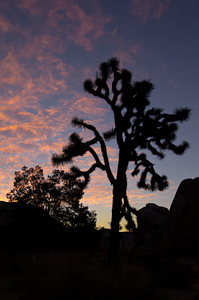 It was a lot of fun and the class was great, firing exposure together as a unit to make sure everyone could run off the same timer. It was a lot of fun. Everyone really enjoyed the shooting and it was a fun class of great personalities to enjoy the night sky with.
It was a lot of fun and the class was great, firing exposure together as a unit to make sure everyone could run off the same timer. It was a lot of fun. Everyone really enjoyed the shooting and it was a fun class of great personalities to enjoy the night sky with.
The next morning our sleepy, but eager, photographers met again to drive into the park. Ryan Ranch was our first stop. We spent the sunrise shooting an old homestead ruin. These old walls were a great and different way to shoot the pleasant morning light and wispy clouds. The area had a lot of interesting shapes and foliage to use as foreground to make some really nice original images of the late 1800s dwelling.
Brian and Jean helped with camera settings and composition, and by this point, most students were becoming or were comfortably familiar with all the manual settings, so it was just a little review and only a bit of help finding just that right angle, and they were getting great shots!
Given our long night shooting the stars, everyone was ready to head back after sunrise for a good breakfast and a long nap before our afternoon image review and sunset shoot.
 The image review was awesome and it was a lot of fun to see the star images from the previous night and give the class some tips on how to process them to look their best. Processing is often a part of the workshop where the class really begins to see the awesome shots they have made.
The image review was awesome and it was a lot of fun to see the star images from the previous night and give the class some tips on how to process them to look their best. Processing is often a part of the workshop where the class really begins to see the awesome shots they have made.
Time had flown by, as it tends to do on these great workshops, and before we knew it, we were back in the van for one last ride out and one last sunset shoot. Split Rock is an area known by rock climbers for its great boulder routes, but it's also got a lot of interesting vantage points for photography. The class once again spread out, each finding their own composition using cracks and curves in the granite, or small splashes of color in the foliage, to help add some foreground interest to the scene before us.
A few late clouds came and parked themselves perfectly over the horizon for us, then lit up pink and orange to help send our class off with some wonderful sunset color and glow on the warm pastel tinted sandstone.
The class was great and everyone got some nice images to showcase the subtle and stark beauty of this desert wonderland. Even though on the surface everything in Joshua Tree looks the same, once we dig a little deeper and open our eyes wider, we will find a wonderful and colorful world waiting to be explored and photographed.
Until next time,
Brian, Jean, and the rest of the Aperture Academy team
P.S. If you'd like to join us at one of our workshops, you can find the schedule/sign up here.
 |
 |
 |
 |
 |
 |
 |
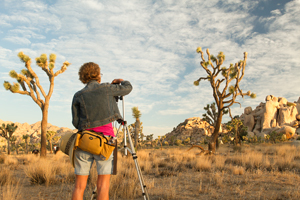 |
 |
 |
 |
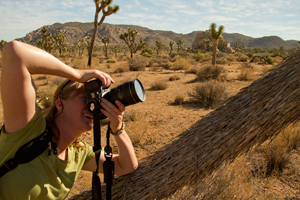 |
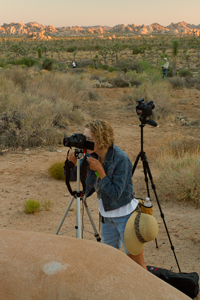 |
 |
 |
 |
 |
 |
 |
 |
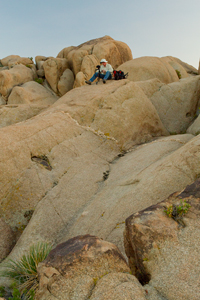 |
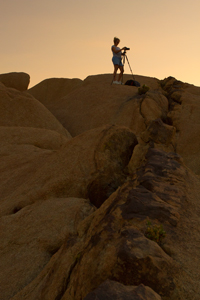 |
 |
 |
 |
 |
 |
 |
 |
 |
 |
 |
 |
 |
 |
 |
 |
 |
 |
 |
 |
 |
 |
 |
 |
 |
 |
 |
 |
 |
 |
 |
 |
 |
 |
 |
 |
 |
 |
 |
 |
 |
 |
 |
 |
 |
 |
 |
 |
 |
 |
 |
|
 |
Other Cool Stuff→ Past Workshop Photos → 72dpi.com → How-To Articles → Photographer of the Month |
 |
Contact Us→ Contact Us → About Us → Site Map |
© 2009-2024 Aperture Academy, Inc.






